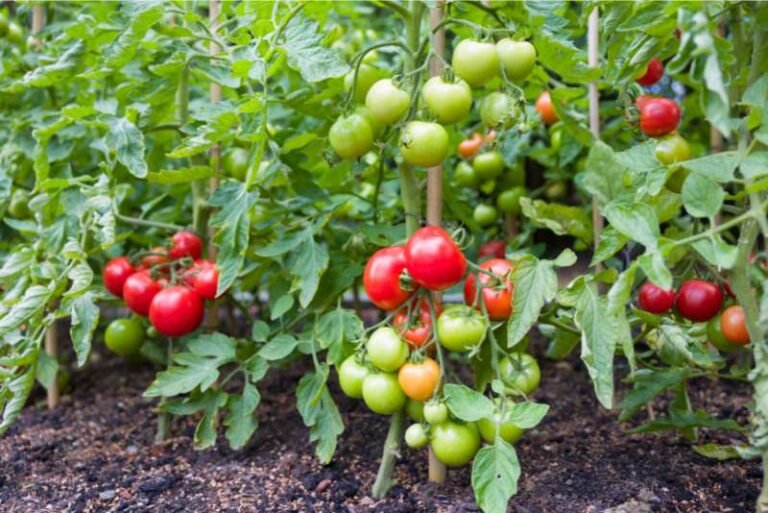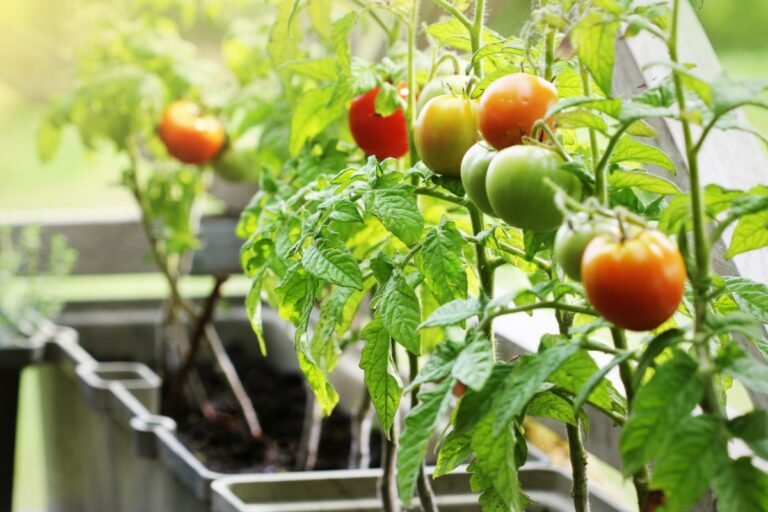Summer Salad Secrets: Growing Lettuce in Warm Climates
Lettuce is a staple ingredient for many salads, but can you grow lettuce in the summer? It can be challenging to grow lettuce in warm climates, but it’s not impossible. This guide will reveal the secrets to successfully growing lettuce in hot weather, touching on topics such as choosing heat-tolerant lettuce varieties, germinating lettuce seeds, transplanting, and harvesting lettuce so it keeps growing.
Heat-Tolerant Varieties of Lettuce
In recent years, the demand for heat-tolerant lettuce varieties has increased as gardeners and farmers alike aim to grow lettuce throughout the warmer months. As traditional lettuce varieties often struggle in high temperatures, these heat-resistant alternatives provide a solution for those who wish to enjoy fresh, crisp greens even during the hottest days of summer. Here is a selection of such lettuce varieties that possess unique valuable characteristics, enabling you to grow lettuce successfully in your garden, regardless of the weather conditions.
Oak Leaf Lettuce
This visually appealing variety, distinguished by its lobed, oak-shaped leaves, is known for its exceptional heat tolerance. Oak Leaf lettuce comes in both green and red varieties and offers a mild, nutty flavor that pairs well with a diverse range of dishes.
Black Seeded Simpson
A popular choice for gardeners seeking to grow lettuce in warmer climates, Black Seeded Simpson is a fast-maturing, loose-leaf variety with light green, crinkled leaves. Its tender texture and refreshing taste make it a favorite for salads.
Buttercrunch Lettuce
This heat-tolerant variety belongs to the butterhead family, known for its soft, buttery-textured leaves. Buttercrunch lettuce forms compact, medium-sized heads that are well-suited for smaller gardens, and its sweet, mild flavor is a delight for the palate.
Jericho Romaine
Originating from the hot and dry regions of Israel, Jericho Romaine lettuce boasts remarkable heat resistance. With its tall, upright growth and deep green, crisp leaves, this variety provides an excellent source of nutrients while remaining resilient in the face of high temperatures.
Nevada Lettuce
A versatile and adaptable batavian-type lettuce, Nevada is characterized by its large, open heads and crisp, succulent leaves. This variety is not only heat-tolerant but also resistant to bolting, ensuring a continuous supply of fresh greens throughout the summer months.
Anuenue Lettuce
Anuenue, a Hawaiian-bred butterhead lettuce, is known for its tender, slightly crinkled leaves that form a loose head with a delightful, subtle flavor. Its impressive heat resistance makes it an ideal choice for gardeners seeking to grow lettuce in warmer climates without sacrificing quality or taste.
Summertime Lettuce
Summertime lettuce, an iceberg-type variety, thrives in hot conditions while maintaining its crisp, refreshing texture. This lettuce forms large, compact heads with tightly packed leaves, offering a satisfying crunch that is perfect for salads and sandwiches. By growing Summertime lettuce, you can enjoy the classic, cool taste of iceberg lettuce even during the peak of summer heat.
Choosing the Right Lettuce Varieties
The key to growing lettuce in summer starts with selecting heat-tolerant lettuce varieties. Lettuce like Nevada, Anuenue, and Summertime lettuce are ideal choices for warm climates. Red Romaine lettuce growing is also a popular option, as this cold-hardy lettuce variety can tolerate warmer temperatures.
Consider trying bolt-resistant lettuce varieties as well, as they’re less likely to bolt (flower and go to seed) in the heat. Some popular warm weather lettuce varieties include heat-tolerant greens like Romaine, Butterhead, and Oak Leaf.
Starting Your Lettuce Seeds
Begin by germinating lettuce seeds in a controlled environment. Start lettuce seeds indoors, preferably in a cool, dark place. How often to water lettuce seeds? Keep the soil consistently moist but not soggy.
Growing lettuce indoors under lights or near a window with indirect sunlight is an option, especially if you’re growing iceberg lettuce indoors or trying to grow romaine lettuce in pots. Starting lettuce seeds indoors helps protect them from high temperatures and direct sunlight, which can hinder germination.
Transplanting Lettuce Seedlings
Once the seedlings have developed a few true leaves, it’s time to transplant lettuce seedlings outside. Transplant lettuce when the outdoor temperatures are still relatively cool, ideally in the early morning or late afternoon. Transplanting lettuce seedlings during these cooler times minimizes stress and helps them acclimate to the outdoor environment.
Before transplanting, be sure to harden off your seedlings, gradually exposing them to outdoor conditions over several days. You can grow romaine lettuce in water, soil, or even containers, but always ensure proper drainage to prevent root rot.
The Role of Shade in Lettuce Growing
Shade plays a vital role in growing lettuce in the summer. Using shade cloth for lettuce or planting your lettuce in a partially shaded area can help protect your plants from the harsh summer sun. Lettuce shade can be achieved by using a shade cloth with a 30-50% light reduction. This will keep your lettuce cool while still allowing for sufficient sunlight.
Lettuce sun or shade? Although lettuce prefers cooler temperatures, it still requires some sunlight. Most lettuce varieties need around 4-6 hours of direct sun per day, but they can tolerate partial shade, especially during the hottest parts of the day.
Watering and Sunlight Requirements
Proper watering is crucial for growing lettuce in the summer. How often to water romaine lettuce? Generally, you should water lettuce every 2-3 days or as needed to keep the soil consistently moist. In particularly hot weather, you may need to water daily. Overhead watering can help keep lettuce cool during the hottest parts of the day.
Sunlight requirements for lettuce vary by variety. Romaine lettuce, for example, has a cold tolerance but can still grow well in warmer climates. It needs around 6-8 hours of sunlight per day, while other varieties like iceberg or butterhead lettuce may do well with slightly less sunlight.
Harvesting Lettuce for Continuous Growth
When it comes to harvesting lettuce, picking the leaves so that the plant keeps growing is essential. Harvest garden royal oak, romaine, or other lettuce varieties by removing the outer leaves while leaving the inner leaves to continue growing. This method allows the plant to produce new leaves and extends the harvest period.
When to cut romaine lettuce from the garden? You can start harvesting romaine lettuce when the leaves are about 4-6 inches long. To harvest, simply cut the outer leaves about an inch above the soil, taking care not to damage the inner leaves.
Saving Lettuce Seeds for Future Use
One of the benefits of growing lettuce is the ability to save lettuce seeds for future use. Once your lettuce plants have bolted and produced flowers, allow them to mature and dry out. Then, carefully remove the seeds from the flower heads and store them in a cool, dry place.
To ensure proper germination, it’s essential to learn how to germinate lettuce seeds. When you’re ready to plant, soak the seeds in water for 24 hours to soften the seed coat. This will help to improve germination rates and lead to more successful lettuce crops.
Final Thoughts
In conclusion, it is possible to grow lettuce in warm climates with the right knowledge and techniques. By choosing heat-tolerant lettuce varieties, providing adequate shade, watering properly, and transplanting at the appropriate time, you can enjoy a continuous harvest of fresh lettuce all summer long. With patience and persistence, you’ll be well on your way to enjoying the perfect summer salad, made with your very own homegrown lettuce.
Let’s Have a Quick Overview – FAQs
Can I grow lettuce in the summer?
Yes, you can grow lettuce in the summer if you choose heat-tolerant lettuce varieties, provide adequate shade, and water consistently. Select varieties like Nevada lettuce, Anuenue lettuce, or Summertime lettuce for better success in warmer climates.
What are the best heat-tolerant lettuce varieties?
Some popular heat-tolerant lettuce varieties include Nevada, Anuenue, Summertime, Romaine, Butterhead, and Oak Leaf lettuce. These varieties are more resistant to bolting and can better withstand warmer temperatures.
How do I germinate lettuce seeds in the summer?
To germinate lettuce seeds in the summer, start them indoors in a cool, dark place with consistently moist soil. You can also soak the seeds in water for 24 hours before planting to soften the seed coat and improve germination rates.
When should I transplant lettuce seedlings outdoors?
Transplant lettuce seedlings outdoors when they have developed a few true leaves and outdoor temperatures are still relatively cool. Ideally, transplant in the early morning or late afternoon to minimize stress and help seedlings acclimate to their new environment.
How much shade does lettuce need in warm climates?
Lettuce benefits from partial shade in warm climates, especially during the hottest parts of the day. Using a shade cloth with a 30-50% light reduction can help protect your lettuce plants from excessive heat while still allowing for sufficient sunlight.
How often should I water lettuce in the summer?
In general, water lettuce every 2-3 days or as needed to keep the soil consistently moist. In particularly hot weather, you may need to water daily. Overhead watering can help keep lettuce cool during the hottest parts of the day.
How do I harvest lettuce so it keeps growing?
To harvest lettuce so it keeps growing, remove the outer leaves while leaving the inner leaves to continue growing. Cut the outer leaves about an inch above the soil, taking care not to damage the inner leaves. This method allows the plant to produce new leaves and extends the harvest period.
How do I save lettuce seeds for future use?
Allow your lettuce plants to bolt and produce flowers. Once the flowers have matured and dried out, carefully remove the seeds from the flower heads and store them in a cool, dry place for future planting.
Can I grow lettuce indoors during the summer?
Yes, you can grow lettuce indoors during the summer using containers or hydroponic systems. Provide your lettuce plants with sufficient light, either through a sunny window or with supplemental grow lights, and maintain consistent moisture levels in the growing medium.







